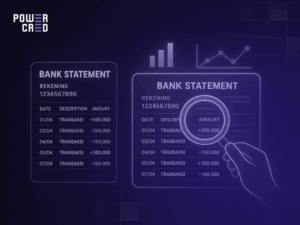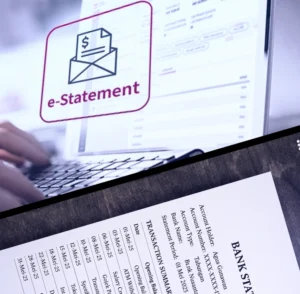
It is estimated that nearly 3.5 quintillion bytes of data is created every single day. With no surprise, data has become the cornerstone for success for all businesses, and everyone of them are on the lookout to capture and collect more data.
Now in order to do so, businesses need automated data capturing solutions.
But what is data capture ?
Data as we know can be anything. Consumer data like KYC documents and bank statements to questionnaires and surveys; It can be anything. Data is a currency that when used effectively, plays a significant role in your business.
Data capturing is the process of extracting structured information from documents – paper or digital- and then converting it into a digital readable format. This data then becomes useful for analysis, is easier to store and can be used more efficiently.
Efficient data capturing, helps streamline operations and enhances the decision making process thus improving the overall efficiency of your business.
The process of data capturing has evolved with time. Not many years ago, the entire process of data extraction was manual; but as the volume of data business has increased. The only way to manage all this was automation.
Today, technologies like AI and Ml are being implemented to automate data capture.
What is the process of data capture?
Depending on the type, complexity and volume of data, its capturing techniques vary. Each type of data presents its own set of challenges.
However, the main steps involved are more or less the same.
- Data is acquired in various formats like documents, images, invoices, purchase orders etc.
- Data is extracted from the documents — either manually or automatically — and converted into readable digital formats
- Extracted data is then ready to processed into insights useful for any particular business process
Take underwriting processes for example, your risk officer receives the KYC or KYB documents, bank statements and other financial documents; all this to understand the credit worthiness of a client.
Interested in automating onboarding processes? Check out how PowerCred can enable you to onboard clients seamlessly.
Types of Data Capture
As mentioned above, data capturing varies with the type and volume of data in concern.
Broadly there are three common types of data capture.
- Structured Data
Capturing pre-defined and organized data such as customer identity from databases or forms is referred to as structured data. Processing such data is easy which makes analysis ready.
- Unstructured Data
Data that is captured through documents likes balance sheets, invoices, images and social media presence is referred to as unstructured data. These are less organized and require advanced extraction techniques to be accurately processed.
For example, large financial and lending institutions deal with different types of financial documents like invoices and bank statements which come in varied formats and types. All these are nothing but unstructured data and needs technologies like
- Optical Character Recognition (OCR)
- Artificial intelligence (AI) powered Language Models
- Machine generated data
Machine generated data (MGD) is referred to as data that is produced by digital devices minus the human intervention.
These include
- APIs
- Security endpoints
- Cloud application
- Web server logs
Machine generated data is valuable because it contains a real time record of user behavior and activity.
What are some of the data capture tools?
Although most of the data we now use is digital– there’s still a heavy reliance on data that’s been captured manually.
Primarily there are two ways to capture data, manual and automated.
Manual data capture – This involves human intervention to capture information from physical documents and entering it manually into a computer system.
Automated data capture– Here we make use of software that extracts data from digital data points.
Since there are multiple ways in which your customer can share information, usually an automated data processing solution which has a human-in-the-loop is an ideal solution.
Let us take a closer look at data capture methods and understand what world for your business.
Manual Data Capture
As we discussed earlier this involves a human manually inputting data into a computer system. It’s slow, time consuming and prone to errors.
Although it might work when you are just starting out and you have low volumes of data to work with.
But as you scale, you would need to scale your business processes too. Which means hiring more and more; this is certainly not sustainable.
This is one of the main reasons why most businesses today are switching to automate data capturing and processing solutions.
Automated Data Capture
This refers to the use of technologies like OCR and AI to capture and process data. The solutions are usually fast, accurate and reliable. Such tools can capture valuable data from varying documents, invoices, digital docs, handwritten documents and much more.
Now there are various methods of automated data capture including..
OCR
Optical character recognition (OCR) digitizes and recognizes text from PDFs, images, and scans, converting it into machine-readable files. Businesses use OCR to capture data from bulk documents, like invoices.
ICR
Intelligent character recognition to put it simply is an OCR on “redbull”. It is a system that allows handwritten characters to be recognised and converted to machine readable text. They make use of pre-trained APIs to read and scan documents in detail. The data is extracted using key value pairs and its automatically structured.
If incase of any anomalies there is provision for “ human intervention” to double check the extracted data
Mobile Data Capture
This involves collecting data via mobile applications. This is far more flexible and provides real-time capture. Ideally used for field work for instant data entry.
Data Scraping
Also known as web scraping, it’s the process of importing information from a website into a local file. This method uses bots and crawlers to capture the information from various websites.
And, finally…
Intelligent Document Parsing (IDP)
This is the next generation of automation in terms of data extraction and its processing. With the help of IDPs, you can capture, extract, process, segregate and validate data from any document; independent of its type format or style.
PowerCred’s Intelligent Document Parser combines advanced OCR with AI powered Language Models to automate data processing workflows. This increases efficiency and productivity while eliminating the chances of error due to manual entry.
With PowerCred you can supercharge your document processing workflows enabling your team to focus on things that really matter.
Conclusion: Turning Data into Dollars—The New Currency
According to McKinsey “ data driven organizations are 23 times more likely to acquire new customers, 6 times more likely to retain them and 19 times likely to be profitable”
Effective and efficient data capture and processing enables businesses to make better informed decisions allowing them to operate smoothly and efficiently.
PowerCred’s IDP is more than just your basic OCR tool – it’s built to supercharge business operations.
From its ability to streamline workflows, enhanced data security and support in decision-making processes makes it a vital tool with the potential to revolutionize how businesses operate.
Some key benefits.
- Immediate deployment allows you to get started instantly without any major training.
- Broad applicability, PowerCred’s IDP is not confined to any single industry. It is a versatile tool for any organization dealing with large volumes of paperwork.
- Advanced fraud detection: WIth the help of sophisticated algorithms PowerCred’s IDP proactively detects fraud reducing fraud incidents by nearly 23%
With data being the new currency, start utilizing data automation tools like PowerCred’s IDP to transform the way you do business.
Here’s your cue to build a sustainable and scalable business today.
Get Started Today.



